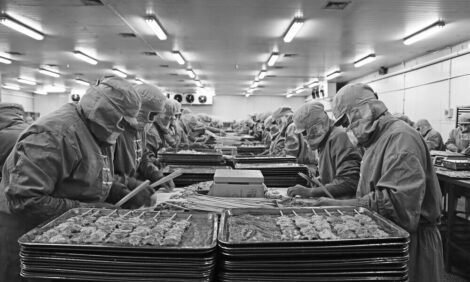



IPPE: How Does a Farm Become Infected with Avian Influenza?
US - After the devastating impacts of the highly pathogenic avian influenza outbreaks in the US last year, all stakeholders were keen to learn lessons and improve future responses to the disease.These lessons have already been put to good use in the recent outbreak in Indiana, where officials used testing of flocks in a huge area around the initial outbreak to quickly identify and contain other infections.
A seminar series on the lessons learned was presented at the recent International Production and Processing Expo (IPPE) in Atlanta, Georgia.
Areas of concern: biosecurity
The first speaker, Dr Lindsey Garber from USDA-APHIS, talked about the spread of the disease through flocks and her team's studies of the common factors identified in different infected farms.
The study looked at patterns of disease in eighty-one turkey farms in the Midwest, primarily in Minnesota.
Dr Garber said that even on the infected farms, biosecurity practices were pretty decent, but fewer than half of the case farms had conducted biosecurity audits.
"Audits are important to be able to assess how well biosecurity policies have been implemented on farms, so that's one area that we think could use a little improvement," she said.
The study identified that very few of the affected farms had their own designated vehicles and equipment, which could be a route for bringing the virus onto farms.
Dr Garber said that it is not feasible to expect every farm to have its own feed truck, for example, but emphasised the importance of knowing where the vehicles come from, and effectively cleaning and disinfecting them.
Another concerning pattern was that on approximately a third of these case farms, the producers had seen wild birds in the barn, which is another potential pathway to bring disease in.
What is the role of wind?
Dr Garber said that the role of wind in spreading the disease was a question that came up over and over in the outbreaks.
To look into it, Dr Garber and her colleagues used weather data to model the wind 'plume' from early infected turkey farms in Minnesota - the area that may contain virus carried on particles in the wind. The wind direction and wind speed both affected the shape and size of the plume.
They then looked at whether subsequently infected farms were located within the plume, and some of the infected premises were.
The scientists then asked whether the wind plume explained why these premises became infected, or whether there was some other cause.
They found that there was an association between being situated in the plume and being an infected farm, but when farms were close together, it was difficult to rule in or out the effect of wind, because being near an infected farm was such a strong factor in becoming infected.
Dr Garber said that air samples could test positive for virus between 70 and 170 metres away, and suspected virus could be found in air samples even 500 metres away from infected farms.
Other commonalities between infected farms
Other studies looked at the geographical location of the infected farms, and looked at the various features of the surrounding area and how this affected disease status.
Again, the distance of the nearest infected farm was by far the most important factor related to being a positive farm.
However, other items were also significant, so the larger the acreage of corn in the area, the higher the likelihood of being an infected farm. The density of poultry and the type of poultry farm were also important factors.
Tilling of nearby fields emerged as an important factor in the early stages of the outbreaks. Dr Garber suggested that this may have been how the virus became airborne initially. Later on, the presence of non-asphalt roads was associated with infected farms.
A comparison of infected with non-infected farms showed that vehicles entering the farm in the two-week period prior to infection formed a key risk factor.
Dr Garber said that 29 per cent of case farms compared to only 3 per cent of control farms said rendering trucks actually entered the farm and got near the barns, and on 61 per cent of case farms compared to 23 per cent of control farms, garbage trucks entered the premises and got near the barns.
Other risks included visitors to the farm not changing their clothes, and having service personnel enter the farm. Dr Garber advised producers to look at where service personnel have been and check biosecurity protocols for these visitors.
At the barn level, studies showed that having dead birds exposed near the barn was a risk factor, whilst having a disinfected hard surface entrance to the barn and having sealed roof ventilation were protective factors.
More content from IPPE:








